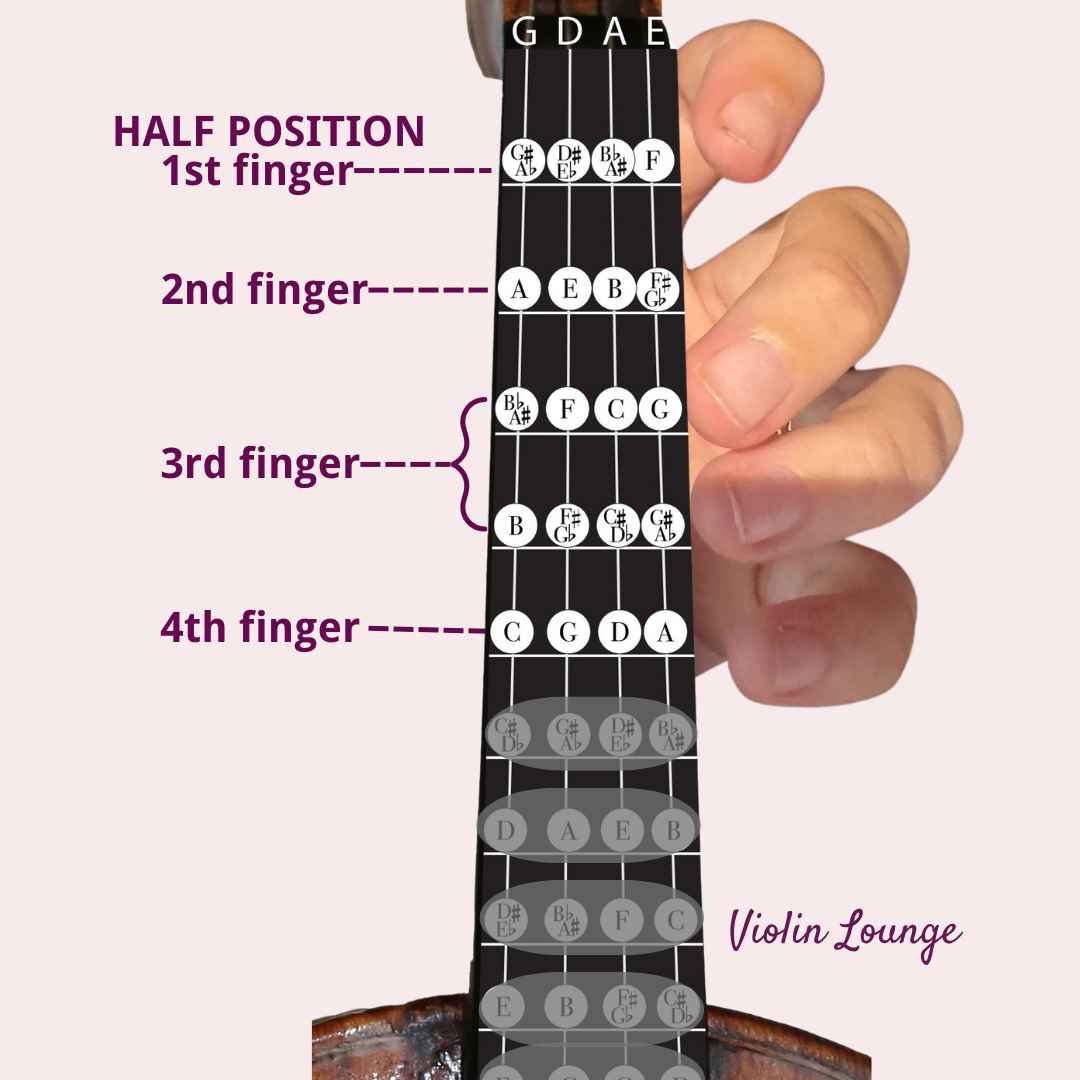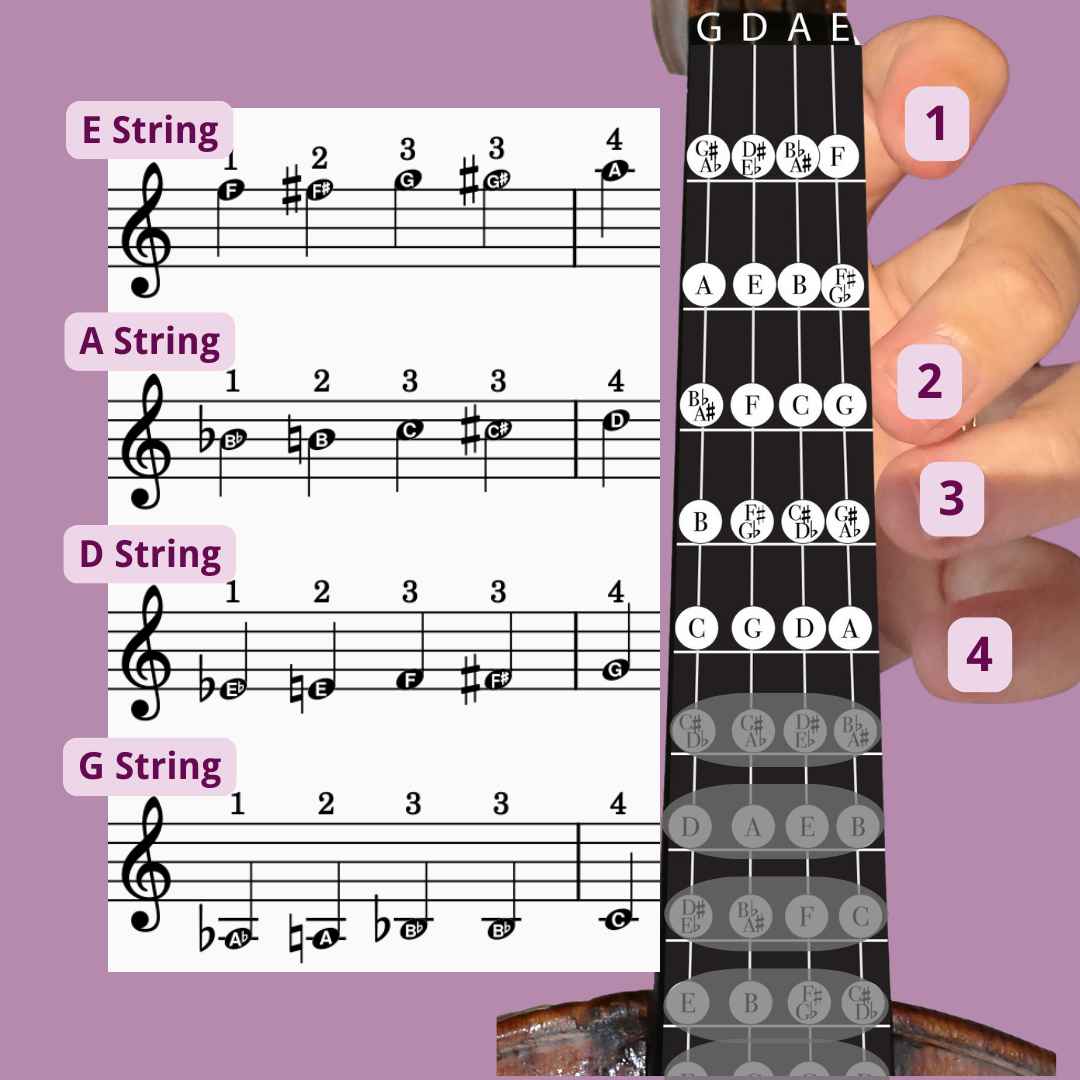Violin Half Position – all notes, finger chart and exercises
Half position on the violin is just a semitone under the first position and comes in handy in solo as well as orchestral playing
Finding Half Position
What does “half position” even mean? Simply put, it is used to play the notes that are “in the cracks” of first position, or lower than regular first position fingerings.
Basically, every finger goes down one half step or whole step lower than it would in first positon. For example, 1 on B♭, 2 on B, 3 on C#, 4 on D. There are different possible combinations but this one is common.
Half position is particularly useful for very fast passages where you do not have time to shift to another string. You might also find it in music with many sharps or flats where you cannot use open strings.
Finger Chart of Half Position

Notes in Half Position
The full chromatic range of notes you can play in half position is as follows:
G string: G#/A♭, A, A#/B♭, B, C
D string: D#/E♭, E, F, F#/G♭, G
A string: A#/B♭, B, C, C#/D♭, D
E string: F, F#/G♭, G, G#/A♭, A
Sheet music of the half position
This is what the half position notes look like in violin sheet music. I’ve chosen between notes that are enharmonically the same. Of course if a F# is possible, a Gb is possible too (also see the finger chart above).

Example of Half Position
It is not common to find extended passages in half position (unless in etudes) because it is only used to make passages more comfortable. There is no need to play slow, legato passages in half position because you have plenty of time to shift.
This quick passage from Mendelssohn’s violin concerto is a great example of how half position comes in handy. At exactly 0:50, you can catch where Hahn shifts from third to half position on the A string. This is marked in the sheet music.
Half Position in Sheet Music
Several etude books contain exercises that focus on half position. Here are just a few to get you started:
- Preparatory Exercises, Op. 37 No. 5 by Jakob Dont
- Preparatory Exercises Op. 37 No. 8 by Jakob Dont
- School of Violin Technics, Book 1 by Schradieck (This is excellent for improving all positions but has some parts specifically for half position)

Hi! I'm Zlata
Classical violinist helping you overcome technical struggles and play with feeling by improving your bow technique.
How to Learn Half Position
The good news for half position is that it does not require shifting your hand further up the instrument. It may however feel strange at first to place your fingers so close to the nut. If you’re out of tune, it usually needs to be even lower than you think! Practice placing the notes with a tuner. Also for each pattern play close attention to whether the fingers touch or there are spaces. This is called “coding”. Learning the coding of half position is the best way to feel more comfortable.
Also, be sure your wrist is hanging down far back enough to reach these notes, there is space between the neck and the base of your thumb, your thumb is across from first finger, and your first finger is comfortably next to the nut. “Pizza wrist” is your absolute enemy and this (and all) situations!

Beautifully, you have explained all the positions in the Finger Chart for 1 to 7 positions. Can you post videos of teaching the 5th and 7th positions in violin so that it will be very useful for me. Can you suggest me some books or material like MULLER RUSCH for higher postion ie 7th position.
I have certain doubts:
1) Do violiin have chords like keyboard.
2) How to play violin by hearing the song without staff notes or notes.
I’ve blog about chords on the violin and seventh position with practice suggestions, so use the search bar and you’ll find them :).